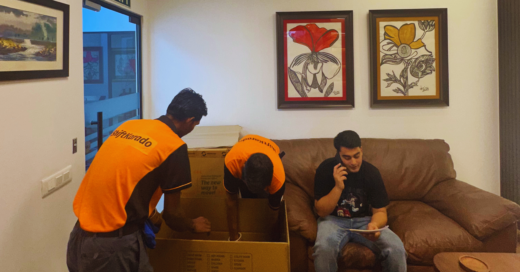Corporate relocation can be challenging, and for businesses, every hour counts. During the relocation process, downtime can significantly impact productivity and, ultimately, profits. The key to a successful move is to strategically reduce downtime and maintain business continuity as much as possible. While some downtime is unavoidable, there are practical steps that can minimize interruptions and keep your team on track.
1. Prioritize Communication and Organization
Clear communication is essential for any smooth transition, especially during corporate moves. Keep your employees informed well in advance so they can prepare and adjust their work schedules accordingly. Share key details such as moving dates, timelines, and any critical changes. A well-informed team can anticipate and adjust to disruptions, helping the entire process run more efficiently.
To enhance productivity, assign specific moving tasks to team members. Tasks like organizing, sorting, and labeling can simplify the packing process for the moving crew, reducing their on-site time and accelerating the relocation. This level of preparation is one of the most effective ways to minimize downtime and keep the move streamlined.
2. Implement Strategic Relocation Planning
Effective planning is crucial for minimizing downtime during a corporate move. Outline expected downtimes and select periods when disruptions will have the least impact—such as during holiday seasons or client downtime. By aligning the move with these low-activity periods, your company can avoid potential productivity losses.
Additionally, mapping out key relocation phases and resources, including furniture, equipment, and documents, allows you to allocate tasks efficiently. A detailed plan will help you anticipate potential bottlenecks and prepare accordingly, keeping the process as smooth as possible.
3. Provide Remote Work Options
Equipping your employees with remote work tools is a simple but impactful way to maintain productivity during a corporate relocation. By enabling team members to work from home or alternative locations, you can ensure that work continues uninterrupted, even as the physical office is being moved.
Select reliable remote work tools, train your employees in advance, and conduct test runs to make sure everyone is comfortable with the tools. This proactive approach can help reduce downtime by allowing employees to stay productive regardless of their location.
4. Develop a Detailed Time Schedule
Sticking to a strict timeline is vital for minimizing corporate move-related downtime. Everyone involved in the relocation should be aware of the schedule, and tasks should be completed according to plan. From organizing the packing process to scheduling the arrival of the moving crew, every detail should be accounted for.
This approach reduces unnecessary delays and helps ensure everything is ready for the movers, so they can complete the packing and loading efficiently. By following a strict schedule, you’ll avoid disruptions that could otherwise extend downtime and impact productivity.
5. Consider a Phased Relocation Approach
Instead of moving all departments at once, consider a phased relocation approach. Relocating one department or team at a time allows employees to continue working, with minimal impact on day-to-day operations. By the time the last team relocates, the new office will already be set up and operational.
A phased approach can reduce disruption, as employees can remain productive throughout the transition. It also allows for a smoother setup, minimizing the impact on essential business functions and ensuring productivity remains high during the move.
6. Prepare for Contingencies
Unexpected challenges can arise during any relocation. To ensure your team is ready, it’s essential to have a backup plan for potential setbacks, such as delays or equipment issues. Contingency planning can reduce the impact of unexpected delays, ensuring problems are handled efficiently to minimize downtime.
By preparing for these scenarios, you can avoid extended downtimes that would otherwise result in additional costs and productivity losses. Being proactive about potential issues will help keep your business moving forward, even if the unexpected happens.
Conclusion
Corporate relocations are complex and, without careful planning, can lead to substantial downtime. While a certain amount of downtime is inevitable, taking proactive steps like clear communication, strategic planning, and phased relocation can significantly reduce disruptions. By focusing on these key areas, your corporate move can be efficient, minimizing productivity losses and ensuring a smooth transition to your new office location.
At ShiftKarado, we specialize in efficient corporate relocation services to help you minimize downtime and maintain productivity. Our professional moving team is equipped to handle all aspects of your corporate move with precision and care. If you’re planning an office relocation, contact us today for a free consultation and see how we can make your move as seamless as possible. Visit our website or call us for more information!
You may be interested

How Long Does It Take to Shift a House? Realistic Timelines for Local & Intercity Moves
Ishika Adhana - Dec 16, 2025One of the most common questions homeowners ask before moving is: how long does it actually take to shift a…

Why Millennials & Gen Z Prefer Professional Packers and Movers Over DIY Shifting
Ishika Adhana - Oct 14, 2025Relocation in India has evolved drastically over the last decade. Gone are the days when families relied on neighbors, borrowed…

Premium Packers and Movers Charges in Delhi NCR (2025 Updated Price Guide)
Ishika Adhana - Sep 16, 2025Moving to a new home should be exciting, not stressful. With ShiftKarado’s premium packers and movers in Delhi NCR, you…

 DOWNLOAD APP
DOWNLOAD APP